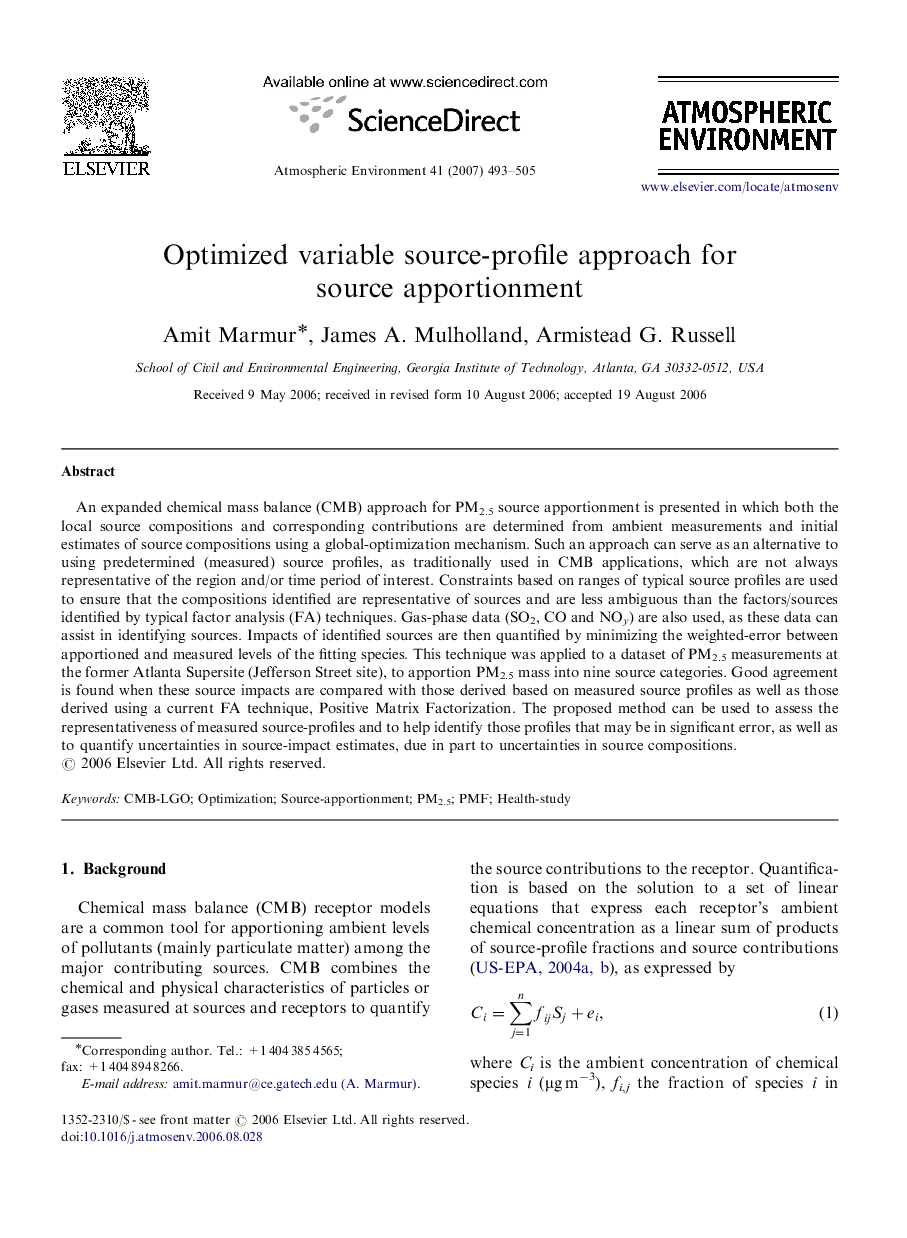| Article ID | Journal | Published Year | Pages | File Type |
|---|---|---|---|---|
| 4444314 | Atmospheric Environment | 2007 | 13 Pages |
An expanded chemical mass balance (CMB) approach for PM2.5 source apportionment is presented in which both the local source compositions and corresponding contributions are determined from ambient measurements and initial estimates of source compositions using a global-optimization mechanism. Such an approach can serve as an alternative to using predetermined (measured) source profiles, as traditionally used in CMB applications, which are not always representative of the region and/or time period of interest. Constraints based on ranges of typical source profiles are used to ensure that the compositions identified are representative of sources and are less ambiguous than the factors/sources identified by typical factor analysis (FA) techniques. Gas-phase data (SO2, CO and NOy) are also used, as these data can assist in identifying sources. Impacts of identified sources are then quantified by minimizing the weighted-error between apportioned and measured levels of the fitting species. This technique was applied to a dataset of PM2.5 measurements at the former Atlanta Supersite (Jefferson Street site), to apportion PM2.5 mass into nine source categories. Good agreement is found when these source impacts are compared with those derived based on measured source profiles as well as those derived using a current FA technique, Positive Matrix Factorization. The proposed method can be used to assess the representativeness of measured source-profiles and to help identify those profiles that may be in significant error, as well as to quantify uncertainties in source-impact estimates, due in part to uncertainties in source compositions.
